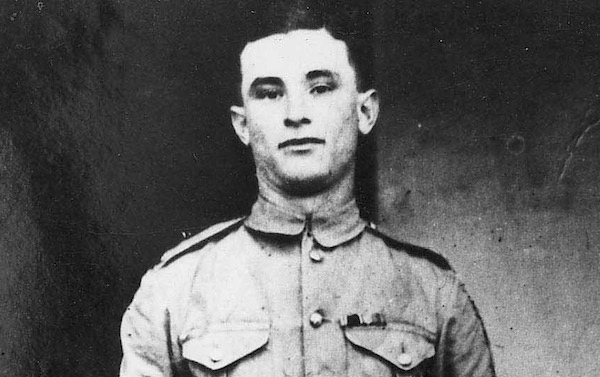
An account of the awakening of an Irish soldier who led a mutiny against the British Army over its atrocities in India and Ireland, and his subsequent execution, 98 years ago this week. Abridged from an essay by Fergal Keane.
Most of you will never have heard of Private James Joseph Daly. There is no immediate reason why you should. A soldier dead for 98 years, he is just one of the British soldiers who have been shot and killed this century. He is a tiny footnote in British imperial history, of interest to a small group of military historians. But for me his life and death illustrate a much bigger story.
First the simple facts of James Daly’s life: a native of County Westmeath, in what was then British-ruled Ireland, Daly was a private in the Connaught Rangers, a regiment that has served in the British army since the 1700s. Joining the British army for the proverbial “shilling a day” was the escape route from poverty for tens of thousands of Irishmen down the years. They fought in every corner of the empire, subduing the natives and imposing the Pax Britannica.
At the end of June 1920, Daly and the rest of his battalion were stationed at Jullundur, near Amritsar, in British India. The infamous massacre by British troops had taken place only a short time before. The area was seething with nationalist anger, and the soldiers of the Connaught Rangers were an important part of the British garrison. There is little indication of what Daly and his colleagues thought about the massacre. But it would appear they were more concerned with events at home in Ireland. The previous year IRA men had ambushed a group of policemen at Soloheadbeg in County Tipperary. The killings signalled the start of a new, bitter phase in the Irish Troubles.
Within a few months the IRA was launching ambushes on British troops and Irish policemen across the country. It is said that one of the Connaught Rangers, home on holidays from India, was attending a football match when he was held up and searched by British troops. The incident shocked him. A British soldier being searched by British soldiers? What he saw was a country that was fast becoming an armed camp, where everybody was expected to take a side. Being a British soldier made him a target for the IRA, yet the British troops in Ireland regarded him as one of the enemy.
As the conflict escalated reports of atrocities by British forces began to reach the Connaught Rangers camp at Jullundur. The precise spark for what happened next is still debated by historians. Some suggest it was a series of attacks by the irregular British forces, known as Black and Tans, which infuriated Daly and his friends. Others believe it was a massacre by regular troops in Dublin which precipitated the crisis. At this point let me add a personal note: if anybody has further information on the mutiny, anything that illuminates the facts or counters misapprehensions, please get in touch with me.
Whatever the exact incident, Private Daly and up to 150 other men staged a mutiny. It appears to have been a fairly badly organised affair, beginning at Jullundur, then spreading to the mountains. A green flag was raised and the mutineers named their HQ “Liberty Hall”, after the headquarters of James Connolly’s Irish Citizen Army that rebelled against the British in 1916. The army chaplain, Father Baker, was the first officer to recognise the inherent danger in the mutiny: should it succeed the local Indian population would surely be emboldened to strike out at the British. This would give the British a powerful reason to deal ruthlessly with the mutineers. The priest moved quickly to try and defuse the situation. He persuaded Daly and the others to hand in their weapons on the promise that all would be forgotten about.
For a while this appeared to work. But tensions rose again. Some say Daly was pressurised by his colleagues, fearful that without weapons they were now at the mercy of the officers. Another theory is that the promise to “forget about everything” had been broken by the officers. Daly and about 40 men drew bayonets and advanced on the arsenal where the weapons were stored. On the way they were confronted by British officers who opened fire. Three men were hit. Two died quickly from their wounds, another died later in hospital from fever. At least two of the dead may have been simply returning from their mess when they wandered accidentally into the line of fire. But the gunfire ended the mutiny.
Daly and his followers surrendered and were led away to the notorious prison at Lucknow. It was there, on 2 November 1920, after being court-martialled, that Private James Joseph Daly, accused of being the ring-leader, was led out for execution by firing squad - the last man in the British army to be shot for mutiny. Eighteen others were given the death penalty but had their sentences commuted to life imprisonment. Two years later they were freed when an independent Irish state was declared.
![[Irish Republican News]](https://republican-news.org/graphics/title_gifs/rn.gif)
![[Irish Republican News]](https://republican-news.org/graphics/title_gifs/harp.gif)

